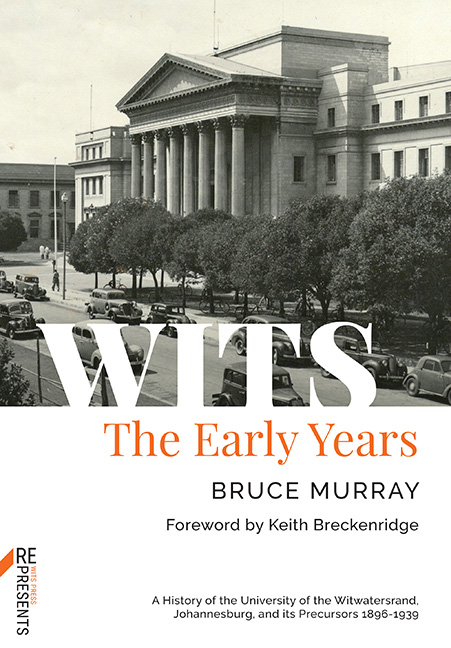5 - Arts and Science
Published online by Cambridge University Press: 24 November 2023
Summary
Perhaps surprisingly, in 1922 Arts was by far the biggest faculty. In the year of the University’s foundation, twelve departments, all of which had been established since 1917, were located in that faculty. The Department of Bantu Studies was added in 1923. One-third of the University’s full-time students were in the Faculty of Arts. What was quite remarkable for a university that was regarded by many as essentially a technical institute, was the calibre of the professors, and indeed some of the students, in Arts.
Although it possessed nine departments, the Faculty of Science was, in terms of students registered, one of the smallest of the faculties. Law alone of the original faculties had fewer students, 49 in 1922 as against 113 in science. Five of the Faculty of Science’s ten departments, mathematics, applied mathematics, physics, chemistry, and geology had been established before the post-1916 expansion. Their pre-war heads all entered the service of the University, although Lehfeldt had moved from physics to economics.
The Faculty of Arts was staffed primarily by men recruited from overseas, particularly Britain. For the most part, those who were to gain prominence, and establish enduring reputations, did so by interesting themselves in their new society. For some this interest was political, for others scholarly, and yet others, a combination of both. But by one means or another they made themselves directly relevant to their new society. As a consequence, Wits soon established a reputation for itself as a home of ‘liberalism’ in South Africa, and as a major centre for the scholarly study of the peoples and cultures of South Africa. This reputation was not dependent on the activities of members of the Faculty of Arts alone. The lawyers, notably O.D. Schreiner and W.H. Ramsbottom, certainly enhanced the reputation of Wits as a centre of liberalism, and Raymond Dart of the Department of Anatomy virtually created the University’s international reputation for the study of the peoples of South Africa, with his discovery of the first Australopithecine skull, the Taung skull. None the less, because of the nature of their disciplines, it was from among members of the Faculty of Arts that the University produced most of its critical and scholarly students of South African society and its peoples.
- Type
- Chapter
- Information
- WITSThe Early Years, pp. 125 - 161Publisher: Wits University PressPrint publication year: 2022



